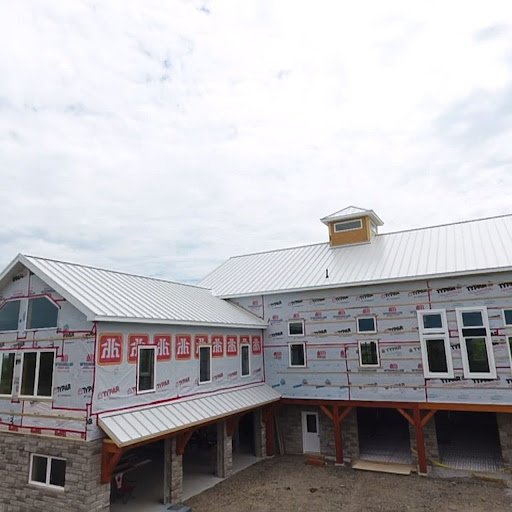Steel roofs are typical on barns, but how frequently do you see them on residential property? It’s quite probable that you’ll see a lot more of them throughout the nation. With wildfires, hurricanes, hail, and other severe weather events causing damage to homes, a growing number of homeowners are reaping the advantages of metal roofing.
According to the Metal Roofing Alliance, steel roof installations have more than doubled in the past five years and will continue to increase at a rate of 15% each year (MRA). There is no other material capable of shielding a house from damaging weather conditions.
Benefits of Metal Roofing
Durability
A metal roof will outlast an asphalt roof at least two to three times, or 40 to 60 years. Metal is highly impervious to the ugly mildew stains that often develop on asphalt shingles in the warm, humid Southern regions. A metal roof, when properly constructed, will not leak or corrode and can resist wind gusts of up to 140 miles per hour.
Protection
Most metal roof systems have passed the UL 2218 Impact Resistance testing at the most severe level, Class IV. Consequently, homeowners in hail-prone areas who select metal roofing may be eligible for insurance premium reductions.
Environmentally Friendly
According to the National Association of Homebuilders Research Center, 20 billion pounds of asphalt roofing are disposed of in landfills each year. Metal roofs may be recycled if they are ever removed. The durability of metal eliminates the need for regular roof replacements. Even better, it may be installed over the existing roof, saving money on shingle removal and landfill fees.
Steel is the ideal material to use in “green” structures to minimize or eliminate chemical chemicals. Unlike wood shakes or other conventional materials, steel is not susceptible to insects, mildew, or decay. As a result, it does not need the use of pesticides or other harmful chemicals.
Energy Efficient
According to the MRA, time-tested metal roofs conserve energy and decrease cooling expenses by up to 40%, depending on location. The introduction of new reflecting paints with energy-saving characteristics has wholly transformed the residential roofing business.
While asphalt and cedar shingles absorb heat, the new cool pigment technology may reflect up to 85 percent of the radiant energy from the sun. Even dark hues may now be considered “cool.” An Energy Star roof may remain up to 100 degrees cooler on its surface than conventional roofs, allowing less heat to enter the structure.
Low Maintenance
A metal roof will not deteriorate, fracture, curl, split, rot, or lose impact resistance as it ages. A metal roof requires a yearly inspection, cleaning the roof of collected leaves or other debris, and inspecting rooftop ancillaries like air conditioners to verify that they are properly drained and maintained.
Aesthetics
For some, a stigma remains from the old, ugly metal barn roofs. However, a host of new colors, finishes, and profiles has drastically improved the look over the last ten years.
A Long-Term Investment
The cost of a metal roof, which is two to three times that of a shingle roof, is often one of the obstacles to buying one. Buyers who understand that a metal roof is a one-time investment rather than a continuing, life-long cost, on the other hand, recognize the significant value it provides.
Asphalt roofs usually need replacement every 15 years due to degradation. A metal roof, on the other hand, is a permanent, very low-maintenance roof.
The Final Solution
The fast rise in the number of metal roofs installed throughout the country is expected to continue as customers get a greater understanding of the durability and both immediate and long-term savings metal roofs provide. Add to that the beauty of metal roofs seen in their communities, and it’s simple to explain the increase in development. The market is ripe; as baby boomers pay off their mortgages and enter retirement, they search for a roof that will last a lifetime.



